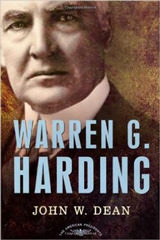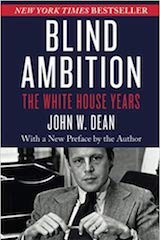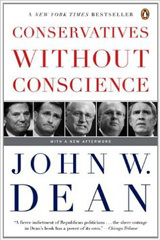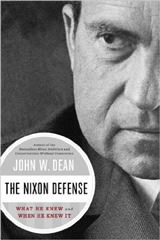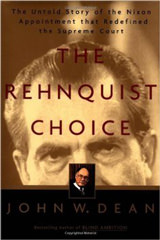Editor’s Note: This is the third in a series of columns introducing a subject that will be ongoing.
For weeks now, I have been reading studies examining Trump’s base, those core supporters who are with him notwithstanding his conspicuous incompetence as President of the United States, and the resulting chaos his lack of leadership has created. Trump’s base is not solely (although it includes) those people who are reported in polls on his job approval, for with the better polls these are randomly selected people. Rather these are the people who are prepared to vote for him in 2020, and vote in 2018 for congressional candidates who support Trump and his administration’s policies.
The core supporters of Trump’s presidency are the people who were attracted to Trump from Republican primaries, those who wanted him to take down established candidates. It takes very little digging to find that these voters liked his political incorrectness, and many had first noticed him when he began attacking President Obama as an illegitimate president: Trump’s conspiracy theory about Obama being born in Kenya, thus not a “natural born” citizen of the United States, who could become president.
It is easy to forget that the eight years of the Obama presidency (2009–2017) was a very difficult time for many white Americans, and these years witnessed a significant political realignment in the United States. The racial schisms that Nixon, Reagan, and the Bushes played on with their southern strategies, which reshaped the Republican Party in the South and rural areas, became a racial divide during Obama’s years in the White House. Americans became totally polarized.
These changes commenced in the immediate aftermath of Barack Obama’s election. For example, Kaylon Johnson experienced them first-hand. He had been an Obama volunteer and was still smiling and wearing an Obama t-shirt just days after Obama’s win, when he stopped at his regular Shreveport, Louisiana, gas station in his GMC Yukon utility vehicle, which displayed an Obama bumper sticker. After purchasing gas and a soft drink, Kaylon was attacked by three white men shouting obscenities at him, including “Fuck Obama” and “No [n-word] President.” They pummeled Johnson, sending him to the emergency room with a broken nose and fractured eye socket that required surgery. There were countless such incidents, along with cross-burnings, and not only in the South but throughout the country. At the University of Kentucky, a life-sized likeness of Obama was hanged from a noose in a tree. Racist graffiti was spray-painted from Chapel Hill, North Carolina, to Springfield, Massachusetts, to Tacoma, Washington. Southern school children chanted: “Assassinate Obama/Assassinate Obama/Assassinate Obama.” The Secret Service arrested a Wisconsin man who announced his plans online to kill Obama, and Neo-Nazi radio host Hal Turner shared his dream of an unmanned drone or chemical-filled balloons killing Obama and all those attending his forthcoming inauguration.
Obama’s election and presidency provoked ugly racist reactions by a startling number of conservative Republicans, both leaders and followers. Openly racist conservatives, men and women, shamelessly viewed the Obama White House as a call to arms and actions. Like a cancer escaping remission, racism reemerged in America with a vengeance, with its practitioners, promoters and organizers using the internet to invigorate once largely dormant organizations like Ku Klux Klan and the Council of Conservative Citizens, and to create new groups, including online gatherings like the Confederate Pride website, attracting men and women who rejected mainstream American conservatism to embrace white nationalism and white supremacy, antifeminism, homophobia, nativism, anti-immigration and Islamophobia. In addition, here was a resurgence of neo-Nazi groups that embraced white supremacy and xenophobia along with anti-Semitism. These groups were soon referred to as “the alternative right,” as early as 2008, later morphing into the label “Alt Right.”
Local, state and national politicians in the South were often ahead of their constituents in reacting to Obama’s election in plotting and planning how to defeat if not end his presidency. As President Obama and wife Michelle danced at his inauguration ball, fifteen of the most powerful members of the Republican Party, top GOP lawmakers and strategists, gathered at the Caucus Room Restaurant in Washington for a private dinner to consider ways to subvert Obama’s presidency. Republican leader Mitch McConnell announced that his agenda was to make certain Obama was a one-term president who accomplished little.
Less than a month after Obama’s inauguration, on February 19, 2009, CNBC reporter Rick Santelli gave an on-camera rant from the floor of the Chicago Mercantile Exchange opposing President Obama’s stimulus package to deal with a tanking economy, and along his way calling for a “tea party” in Lake Michigan. News reporters played and replayed the rant, which caught the attention of some conservative activists, who by conference call agreed to start protesting Obama’s agenda. Unknowingly, Santelli and the news media had ignited a movement. The Tea Party was born. Soon, nationwide demonstrations erupted, largely spontaneously, and organizers kept them going. (See, e.g., Scott Rasmussen and Doug Schoen, Mad As Hell: How the Tea Party Movement Is Fundamentally Remaking Our Two-Party System (New York: Harper Collins Publishers, 2020); Theda Skocpol and Venessa Williamson, The Tea Party and the Remaking of Republican Conservatism (New York: Oxford University Press, 2012); Nella Van Dyke and David S. Meyer (eds.), Understanding the Tea Party Movement (New York: Routledge, 2016).)
The discomfort of the Alt Right and Tea Party with an African American in the White House was not lost on Donald Trump, and in early 2011 he reached out to a leading right-wing conspiracy theorist who claimed Obama was not a natural-born American, rather from Kenya. Trump quickly became “birtherism’s” most outspoken champion. And the racism of the Alt Right, Tea Party, and other conservatives discovered Trump. This race-based support would take him all the way to the White House, and it remains the foundation of his support. (Of course, he cannot appear openly racist, so he has a few token African Americans in his otherwise lily-white administration, e.g., Omarosa Manigault, for a while, and Ben Carson, for a while longer.)
There are other factors, of course, that solidified and united the people who elected Trump, and retain them as his core supporters. These include the development of social media on the internet (Trump without Twitter would be unable to communicate with these people), and the growing availability of dark and hidden money in the presidential election process following the landmark ruling of the US Supreme Court in Citizens United vs. FEC, decided on January 21, 2010. This split decision by the High Court changed the political landscape. Without Citizens United, Donald Trump would not be president because this new money not only funded his campaign, but it enabled disparate groups of like-thinking people to operate as a unified force.
While the news media at least took notice of the people who were organizing to support Trump during his campaign—most of whom have remained among his core supporters—the reason these people support Trump has been widely misunderstood if not totally ignored, although not by everyone.
For example, on January 17, 2016, as Trump’s campaign was weathering storm after storm, looking like it might sink, Politico published a brief article by Matthew MacWilliams, founder of a small upstart political communications firm and a political science PhD candidate at the University of Massachusetts, Amherst. MacWilliams noticed that the work on his dissertation appeared to be playing out in the Trump campaign. Speaking with his academic voice, he wrote: “I’ve found a single statistically significant variable predicts whether a voter supports Trump—and it’s not race, income or education levels: It’s authoritarianism.” His finding was based on a national poll sponsored by University of Massachusetts, asking questions about authoritarianism that other pollsters were ignoring. Based on his findings, he urged other pollsters to start including such questions. Very few did, although a few did late in the general election.
Nonetheless, by January 20, 2016, Breitbart News was firing back at MacWilliams, as well as at Politico for publishing the work of “a college graduate student.” Breitbart writer/editor Mike Flynn (a former Coca Cola bottling plant manager turned radio talk show host turned Breitbart editor, who died six months later of a heart attack after posting several nasty columns on the Clintons) found the MacWilliams material wanting because it was based on research that began following the rise of the Nazis in the late 1930s. Flynn, who had no idea what he was talking about, nor did he make any effort to learn about the seven decades of study of authoritarianism, simply dismissed it. This is not unusual. Overwhelmingly, conservative Republicans who test high as right-wing authoritarians are unhappy to be described by this label, finding it pejorative. (A few academics who study authoritarianism have tried in vain to come up with some other label, and so far they have been less than successful.) But Matthew MacWilliams not only impressed the Politico editors, a few others began looking closely at what he was saying.
Amanda Taub, who described herself at the time as the “senior sadness correspondent, a former human rights lawyer, now covering foreign policy, human rights, and Shetland ponies” at Vox, was fascinated by the MacWilliams report. She started digging, and by March 1, 2016, she published the best piece that would be written during the 2016 presidential election cycle explaining the reason people were drawn to Donald Trump. It was a 7,700-word dip into the well-tested and vast social science that explained the secret source of the Trump phenomenon. Her study and report were titled: “The rise of American authoritarianism,” with a subtitle punching up the significance of it all: “A niche group of political scientists may have uncovered what’s driving Donald Trump’s ascent. What they found has implications that go well beyond 2016.”
Ms. Taub’s piece was thoroughly researched and nicely written, revealing key information explaining why Republicans were supporting “a far-right, orange-toned populist with no real political experience, who espouses extreme and often bizarre views.” Taub was not reporting the guesswork of pundits, rather information based on political science and polling, with Vox even running its own polls to confirm the findings that Trump was, in fact, the darling of little known American voters called authoritarians. Drawing on the work of Matthew MacWilliams, as well as on even more established political scientists like Marc Hetherington of Vanderbilt, Jonathan Weiler of the University of North Carolina, along with other scholars in related fields (e.g., professors Jonathan Haidt, Stanley Feldman, Karen Stenner and Elizabeth Suhay), Taub’s article provided a solidly documented explanation of how Trump had become the candidate to beat in 2016. (Amanda Taub is now with the New York Times.)
It should surprise no one that the authoritarians who elected Trump are now his core supporters—his base. A steady stream of post-election academic study confirms the analysis that Amanda Taub assembled during the Trump campaign, information which continues to be largely ignored by the mainstream media. Authoritarianism not only sounds pejorative, but very wonky. The breakdown questions Ms. Taub suggested in March 2016, remain equally if not more relevant given Trump is not only president, but already planning is 2020 reelection bid: What is American authoritarianism? Where did it come from? How does authoritarianism work? What does authoritarianism explain? How did authoritarians end up in the Republican Party? What does fear and loathing have to do with it? How is authoritarianism changing America’s political and social landscape? What do authoritarians want? And how have authoritarians changed American politics?
Having written a book on this subject in 2006, in coming columns I plan to answer these and related questions, drawing on the latest research emerging from increasing numbers of academics who appreciate this key to understanding the Trump presidency. Stay tuned.








